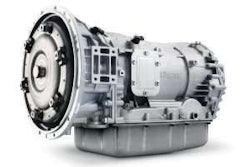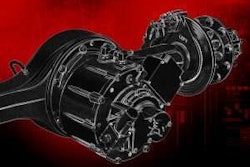By Brian Humphrey, OEM Technical Liaison, Petro-Canada Lubricants
A question often asked by fleet owner-operators is “do I need two separate engine oils for summer and winter?”
This is especially true in locations where the climate can swing from extremely cold winters to hot summers, such as Calgary, Alberta, Canada or Chicago, Ill. With so much to consider as part of fleet maintenance, it’s understandable that owner-operators want to find ways to run their businesses as efficiently, reliably and safely as possible.
The good news is that consolidation is possible. Thanks to the availability and popularity of multi grade oils such as a SAE 15W-40 or 10W-30 and their ability to handle both ends of the spectrum of operating temperatures, fleets can benefit from not requiring a seasonal change. However, it’s important for owner-operators and fleet managers to understand the different demands hot and cold conditions put on lubricants, and the risk of not using the appropriate oil for the application.
What stress can low temperatures put on engines?
When it comes to fleets operating in cold ambient temperatures, the main concern is keeping engines warm and running efficiently, without risk of seizing up or suffering other adverse effects. This is especially the case for businesses working in time-pressured conditions such as snow removal, waste management and mining, where any unscheduled downtime from reduced performance can quickly lead to lost productivity and revenue.
A colder climate necessitates the need for a lower viscosity grade engine oil, to ensure proper and adequate flow of oil to protect key critical engine components especially during cold start-up. This is because these oils are able to move around machinery at a quicker pace, keeping the components properly lubricated and reduce cranking loads. Also, low temperature operation combined with extended periods of idling can produce excessive amounts of water condensation and contamination of the engine oil.
Lubricants are available in different SAE (Society of Automotive Engineers) grades to suit the climate where they are used and their application. For example, companies with long on-road journeys, the measure of success is typically the number of miles the vehicle can cover. Whereas off-road sectors such as mining and construction need their equipment to operate within tight time schedules, because any unscheduled downtime can quickly lead to lost productivity and revenue.
The SAE grades dictate the acceptable temperature range in which they can perform optimally, according to the engine oil viscosity classification, the “W” following the SAE viscosity grade stands for “winter” and indicates that an oil is suitable for use in colder temperatures.
Oils carrying the “W” designation must have the proper viscosity value when measured at appropriate low temperatures. Check your owner’s manual for the proper SAE grade oil for the ambient temperatures expected.
It is important to note that the SAE viscosity grade classification system identifies only viscosity and indicates nothing else about the type or quality of an oil or the service for which it is intended.
How do hot temperatures impact lubricants?
One of the main concerns for fleets and owner-operators working in hot environments is a decrease in lubricant film thickness due to lower viscosity. The viscosity of an oil is crucial as it dictates its ability to form an oil film to protect moving engine parts from excessive contact. If the oil’s viscosity is too low, the oil film thickness may be too low which could mean that the engine parts aren’t being protected effectively, causing an overheated condition. This can cause serious operational problems such as a breakdown of the oils film, reduced power, increased oxidation rates and fuel economy losses due to oil thickening.
It is critical that the operating temperature of the equipment is taken into account when selecting an oil. A warm climate often necessitates a heavier engine oil such as an SAE 30 or 40 grade; one able to resist the breakdown that comes with higher operating temperatures by ensuring proper and adequate film thickness and the protection of critical engine components.
SAE classifications values which do not include the “W”, define oil grades designed for use at higher temperatures. The second number in the viscosity rating – the “40” in 10W-40, for example – means the oil will have a thicker film at high temperatures than one with a lower second number.
Planning and preparation is key
Regardless of the climate and conditions a fleet owner-operator is working in, it’s crucial that they have prepared and considered not just their choice of lubricants, but multi-grade hydraulic, driveline and gear oils too to ensure all engine components are protected. Operators should also be regularly checking coolant condition and batteries to ensure engines are running safely and efficiently, no matter the weather or time of year.










